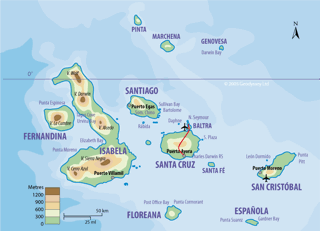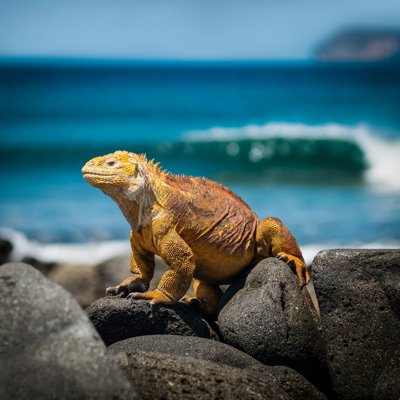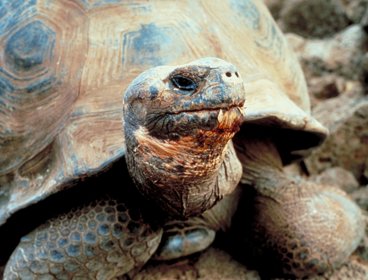What is the link between the Galápagos Islands and Leonardo DiCaprio?
This week it was announced on Leonardo DiCaprio’s twitter account that the film star and environmentalist will be contributing to a $43 million (£30.2 million) conservation effort on the Galápagos Islands, in partnership with Re:wild (which DiCaprio co-funded). Paula Castaño and other environmental individuals, as well as the Galápagos National Park Directorate, Ecuador’s Ministry of Environment and Water, and the Charles Darwin Foundation will all be involved. Castaño has stated:
Time is running out for so many species, especially on islands where their small populations are vulnerable and threatened.
Conservationist, Paula Castaño

Castaño goes on to explain that 97% of the island archipelago is classified as Ecuadorian National Park and therefore the push to rewild the island ecosystems will be done in line with supporting local communities, and acknowledging the realities of ecotourism.
Where are the Galápagos Islands?
The Galápagos Islands are an Ecuadorian archipelago of islands in the Pacific Ocean. They are 1000 kilometres off the coast of Ecuador. Image 1 below shows the 13 major, and 6 smaller, islands.

Below is a brief chronology of key conservation dates for the Galápagos.
-
1959 the islands become the Galápagos National Park
-
1978 designated a UNESCO World Heritage site
-
1986 the Galapagos Marine Resources Reserve was created to protect the surrounding waters
-
2012 conservationists remove invasive rats from Pinzón to help restore saddleback tortoises
-
2021 Re:wild begins with a $43 million commitment focusing on Floreana
What does the conservation project hope to achieve?
The project is chiefly a rewilding initiative hoping to restore three indigenous species: the Floreana mockingbird, the pink iguana and the Floreana Giant Tortoise as well as funding operations to restore Floreana Island more widely, home to 54 threatened species. Of this number 13 have been totally removed from the island (but are present in other parts of the Galápagos).
In total, around 250 species are threatened through the Galápagos. Rewilding and restoring species back onto the island of Floreana will need multiple different activities. For example, for the pink iguana a captive population will be required as they currently only live on the northern slopes of Wolf Volcano to the north of Isabela Island.
Leonardo DiCaprio posted on 17 May that half the Earth’s remaining wild areas could disappear in the next few decades “if we don’t decisively act” when announcing the conservation project launch. The Re:wild promotional film starts by saying:
A technology exists all around us, that breathes and breeds life, that makes food and rain, that protects us from floods and new disease. It is a technology with the power to reverse global warming, to prevent pandemics, to bring life back from the brink of extinction. It has existed for 4 billion years: it is the wild.
Re:wild
The pledge to rewild the Galápagos Islands is timely and unanimously welcomed. Like other Pacific islands, the archipelago is facing a multitude of challenges from climate change as surface sea temperatures rise, ocean acidification steadily increases and the El Niño and La Niña events become more unpredictable. In worse-case future scenarios for greenhouse gas emissions (GHGE), extreme El Niño and La Niña events are expected to increase in frequency in the Pacific from about 1 in every 20 years to 1 every 10 years by the end of the 21st century.
Further reading
Leonardo DiCaprio announces a pledge of $43 million to the Galápagos Islands
Fund aimed at preserving endangered wildlife
BBC Global News podcast (from 23:10)


